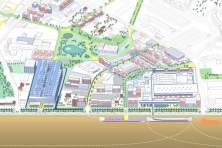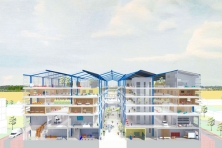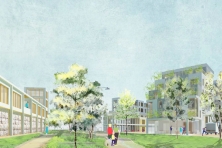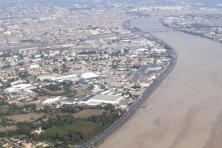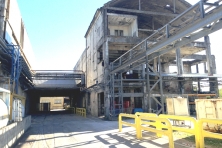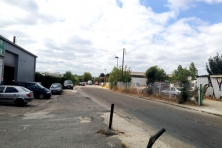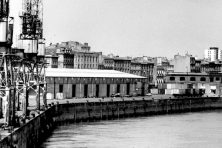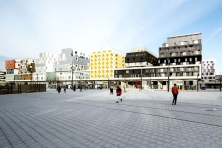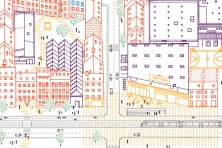La Grande Mine
Bègles (FR) - Winner
TEAM DATA
Team Representative: Jeanne Gerbeaud (FR) – architect
Associate: Armelle Goyon (FR) – architect
73 rue des Prairies, 75020 Paris (FR)
+33 688520394 – contact@jagg.archi – jagg.archi
See the complete listing of portraits here
See the site page here

A. Goyon & J. Gerbeaud
INTERVIEW
Click on the images to enlarge
1. How did you form the team for the competition?
We both started our architecture studies in Bordeaux then got our diplomas in Paris. We have been working together for years. In 2017, we created Atelier JAGG, a few months before the Europan competition was launched. To enter this competition together in our practice’s name set the official launch of our professional collaboration. The two of us being from Bordeaux, the choice of the Bègles site was obvious, as we know that territory well.
2. How do you define the main issue of your project, and how did you answer on this session main topic: the place of productive activities within the city?
The Grand Port territory is mainly composed of small activities and large productive footprints as the Paper Mill or the Coliposte site. These activities are part of the place’s identity and give evidence of the town’s productive heritage. Today, they must be part of the ongoing process of urban mutation in the Euratlantique territory. Hence, the challenge was to ensure the on-site continuity of this economy, while inventing an inhabited neighbourhood that would welcome new dwellers. We thought out hypothesis of the necessary conditions that would allow a virtuous cohabitation between workers and dwellers, systems capable of creating interactions that would respond to everyone’s sociability and conviviality needs.
3. How did this issue and the questions raised by the site mutation meet?
The two operational sites are implemented far from each other and raise very different issues. The paper mill questions the conditions of the maintenance of an industrial activity within a budding urban context while La Poste explores the subject of a change of activity within a volume of industrial proportions. To distance ourselves from the singularities of each operational site, we installed a strategy aimed at the whole neighbourhood’s scale, where the web of small existing businesses sustains and goes along with the development process of the Grand Port.
4. Have you treated this issue previously? What were the reference projects that inspired yours?
In Bordeaux, in the late 90’s, we were witnesses to the transformation of the city centre, and more specifically to the great works on the quays of Bordeaux’s left bank. The former warehouses and the vast parking lots were replaced by generous public spaces that transformed the city’s image and offered Bordeaux’s inhabitants spaces with multiple uses (sustainable mobilities, retail, events, gardens, sports). It is this relationship to the river that we tried to pursue in Bègles, while preserving the site’s identity. While imagining a neighbourhood that could shelter the accommodation-work tandem, we looked at models of mixed and hybrid operations as the Mac Donald warehouses in Paris that associate offices, retail and housing. To sustain our reflexion, we also studied the work of Architecture Workroom, a think tank based in Brussels that examines the place of activities within cities by bringing together actors with complementary skills.
5. Urban-architectural projects like the ones in Europan can only be implemented together with the actors through a negotiated process and in time. How did you consider this issue in your project?
The image of the Grand Port that we offer is set at a given time, it is the image of an ongoing process that takes into account a common ambition as well as the hazards and uncertainties inherent to urban projects. The neighbourhood that we describe will be the result of a consensus between the decision-making institutions, the opportunities of each actor (private, public), the investments injected for the Grand Port transformation. To carry out this process, we imagined a cooperative setting that allows to create a link between the whole of the actors while guaranteeing their autonomy. This proposition allows to gather all the stakeholders towards a common gaol.
6. Is it the first time you have been awarded a prize at Europan? How could this help you in your professional career?
Yes. We believe that this competition can benefit our young practice. It allows us to meet other creative teams and to exchange views with various stakeholders such as the city of Bordeaux, the metropolis, and private actors that are affected by the transformation of the Grand port area. We are actually in touch with the city of Bègles and the EPA Euratlantique, to continue this committed work. Access to public projects could indeed be a spingboard.
